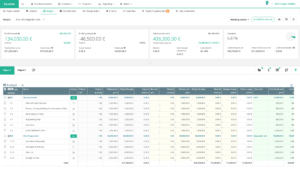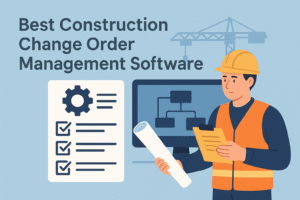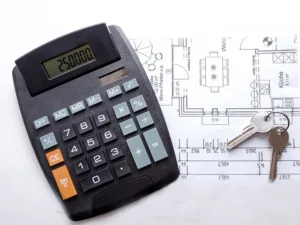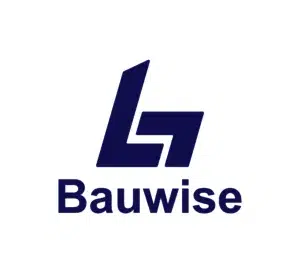Cost control in the construction industry helps project managers keep spending under control. It offers a way to predict how much money will be spent on workers, materials, and other expenses. The goal of having a plan for controlling costs is to make sure the project finishes on time, doesn’t go beyond what was planned, and doesn’t cost more than expected. Usually, when reporting project costs, they look at expected future money movement, how much they think the project will cost in the end, and how much has been spent so far.
Table of Contents
What is the construction cost control process?
Construction cost control is a critical aspect of effective construction cost management in the construction industry, ensuring that projects remain within budget and are delivered efficiently. It involves a systematic cost control process that compares actual costs against budgeted figures, identifying discrepancies early to mitigate financial risks. This practice is pivotal for the sustainability of any construction business, as it helps to avoid budget overruns and ensures the efficient allocation of resources. By closely monitoring expenditures and implementing strategic adjustments, construction cost control contributes to the overall success of construction projects, maintaining financial integrity and maximizing value for stakeholders.
Early Cost Estimating
Before making detailed plans, figuring out how much a construction project might cost is the first step in deciding how much money it will need. But not everyone in the construction industry is good at guessing these costs. If the cost estimates are way off, it can really mess up the project’s success and might even eat up all the profit margins. That’s why it’s wise to spend a bit more to get a construction manager who knows their stuff and has a history of making accurate cost estimates.
Top 5 Tips for Construction Cost Control
Improve the construction cost control process with the following tips:
1. Use Construction Cost Control Software
Moving from Excel to specialized software like Bauwise is a game-changer for keeping track of construction project money. Excel is easy to mess up because you have to enter everything by hand, and those mistakes can mess up your budget big time.
As a construction manager, it was a whole new world when I switched to using software specifically made for construction budgeting. With Bauwise, I upload our project’s budget, and it handles the rest. It’s like having an intelligent assistant that keeps an eye on every dollar spent.
One thing I really appreciate is how it automatically updates whenever costs change. If we spend more on materials or if something else changes, I see it right away. No surprises. This means I can spot if we’re about to go over budget in any area and fix it before it becomes a problem. It’s like having a real-time snapshot of where our money is going all the time.
Another cool feature is being able to predict future costs. This isn’t just guessing; it’s based on what’s happening right now and what’s happened before. It helps me see problems before they happen so we can avoid going over budget before it’s too late.
Also, this software lets me dive deep into our construction project spending. I can break it down and see exactly where our money is going. This helps a lot in finding ways to save money without cutting corners. Excel spreadsheets just can’t do this the way dedicated software can.
Switching to construction cost control software has greatly impacted how I manage construction projects. It’s not just about tracking project costs; it’s about being more innovative with our budget and ensuring we finish our construction projects successfully without overspending.
2. Keep Your Cost Plan Up to Date
As a construction manager, it’s my job to closely monitor our spending and ensure we’re sticking to our project budget. This means I’m constantly checking and tweaking our cost plans. Sometimes, we find out we spend more than we thought in one area, for example, labor and material costs. When that happens, I look for ways to spend less on another part of the project to keep our overall budget balanced.
It’s also important to remember that prices can change because of things we can’t control, like when there’s a sudden increase in prices (that’s inflation) or when it’s hard to find specific materials we need. These changes can really throw off our budget if we’re not careful. A construction project that looked like it was on track with the budget can suddenly be way over budget because of these unexpected changes.
One thing that’s been a huge help is using construction management software that connects with our accounting system. This setup gives everyone involved a clear view of how much work is getting done and how much it costs right as it happens. This real-time info is valuable because it lets us quickly make intelligent decisions. If we see that labor costs are going up faster than we planned, we can figure out why and fix the problem before it gets worse.
3. Regularly Send Out Cost Updates
One of my main tasks is ensuring clients know how their money is spent. That’s why I regularly send them detailed reports on the construction project costs. This not only keeps them happy and in the loop but also allows me to compare what we’re spending with our budget plan. It’s a great way to see how healthy the project’s finances are.
These cost reports are super essential for keeping everyone on the same page—whether it’s the project owners, the main contractors, or the subcontractors. When I share updates on how the project is doing money-wise (like with Daily Reports), it helps us catch any delays or unexpected cost overruns early. This way, we can tackle any issues before they get bigger and ensure the project stays on track.
4. Create and review contingency budgets
I always stress the importance of having a solid contingency budget. We know that construction projects can hit snags, whether it’s delays or going over the budget. That’s why we set up risk management strategies early on. This way, if something goes sideways, we’re not scrambling at the last minute, trying to fix things in a rush (which can really drive up the costs).
For instance, using Bauwise construction cost control software is a big help. It keeps track of all the crucial budget line items, change orders, commitments, and cash flow. This software can alert us if there’s a big hold-up looming, giving us a heads-up to tackle the problem before it gets out of hand.
It’s crucial to remember that contingency budgets are there to deal with unexpected risks, not for changes we decide to make along the way. If we want to change something about the project because we’ve changed our minds or want something different, we need to figure out how to adjust our budget elsewhere. We shouldn’t dip into our contingency funds for that.
5. Motivate the Team to Stick to the Budget Through All Design Phases
I always emphasize the importance of keeping our designs within our budget from start to finish. It’s crucial to stick to certain rules that help control how much we spend. A key thing to remember is that about 80% of our project’s cost comes from the design phase, and only 20% comes from the actual building part.
I make it clear to everyone on the team that no one can just decide to spend more in one area without figuring out how to offset that cost somewhere else. It’s a team effort to ensure our designs don’t end up making us go over budget.
I also ensure everyone working on the project understands that our construction plans are based on our total budget. Any changes made after the fact can lead to extra costs we weren’t expecting. Keeping everyone aligned on this from the get-go helps us avoid surprises and stay on track financially.
Conclusion
Many construction projects go over budget because of poor cost-control practices that lead to cost overruns. To manage construction projects effectively, you need to use a cost-control process that is well thought out. Cost control in construction is quite difficult because there are so many moving parts during construction projects. Project managers must track construction costs, create accurate cost control plans, conduct cost estimates, and find cost savings opportunities to successfully complete projects.
I recommend using Bauwise construction cost management software to prevent cost overruns, improve the cost control process, reduce construction project costs, and improve your construction business’s financial health. For project managers, it is a must-have software for managing construction costs and keeping project budgets on track.
About the Author

Mikk Ilumaa
Mikk Ilumaa is the CEO of Bauwise, a leader in construction financial management software with over ten years of experience in the construction software industry. At the helm of Bauwise, Mikk leverages his extensive background in developing construction management solutions to drive innovation and efficiency. His commitment to enhancing the construction process through technology makes him a pivotal figure in the industry, guiding Bauwise toward setting new standards in construction financial management. View profile
Related posts
Read our articles where you can find useful and relevant information about construction cost control:






